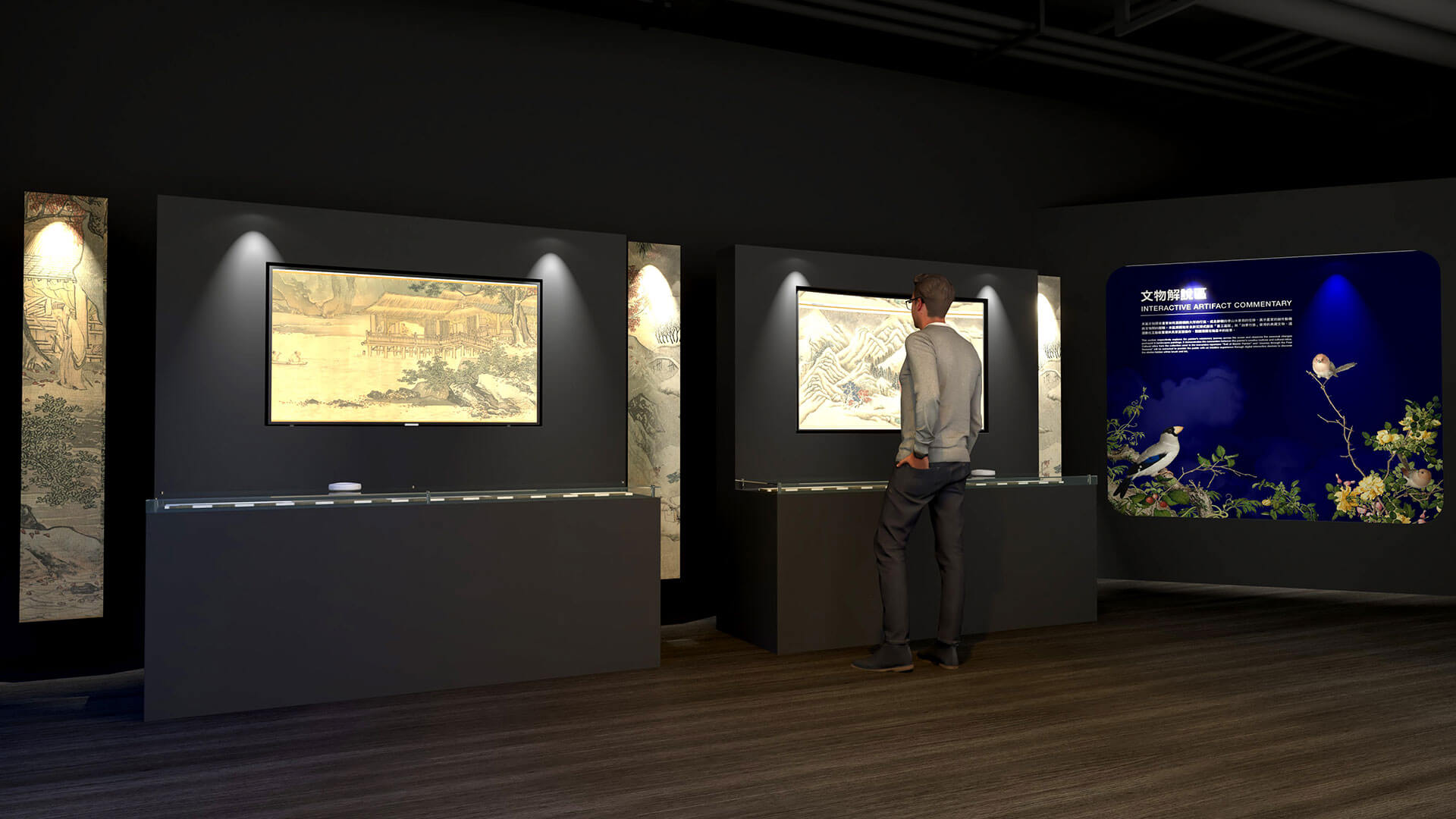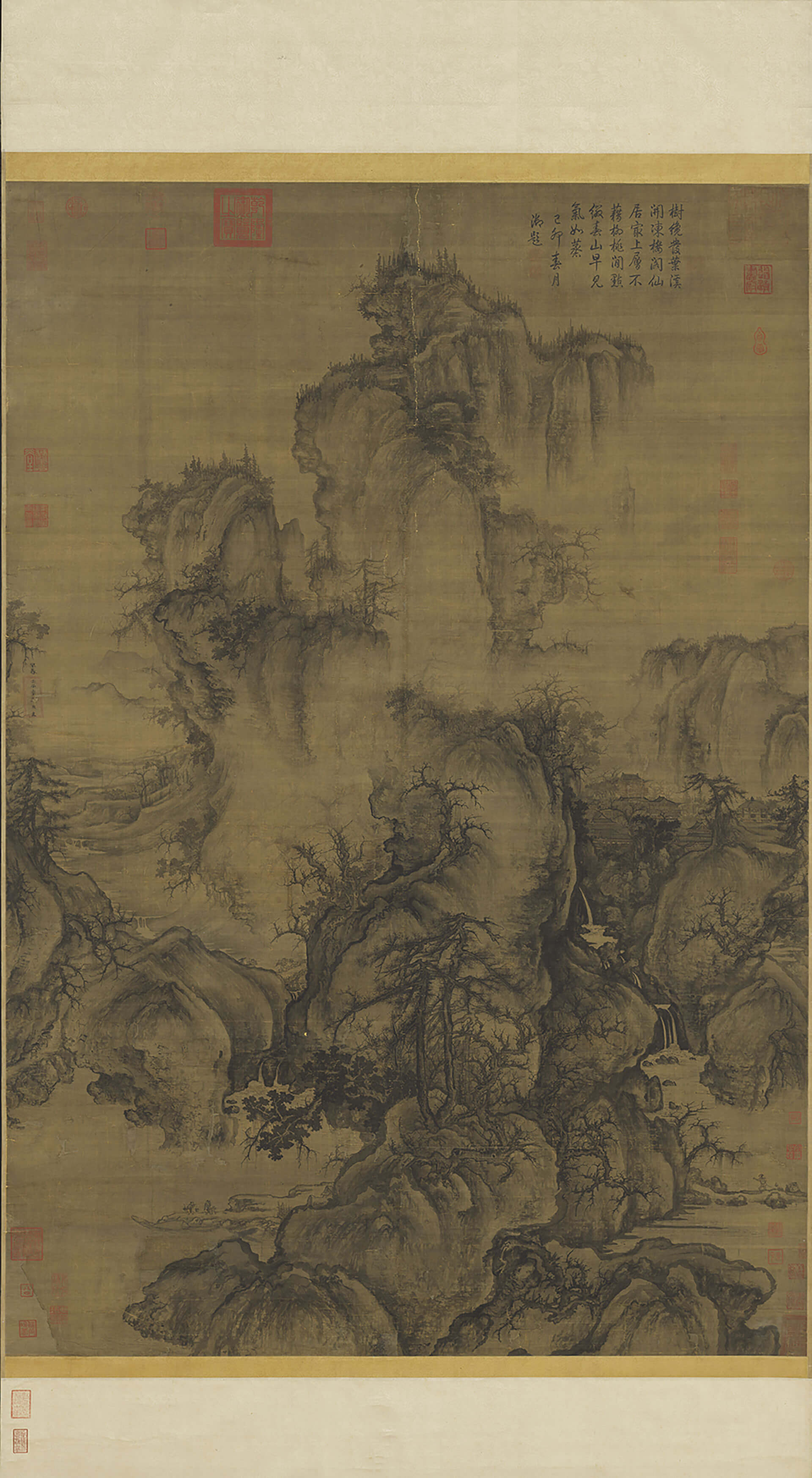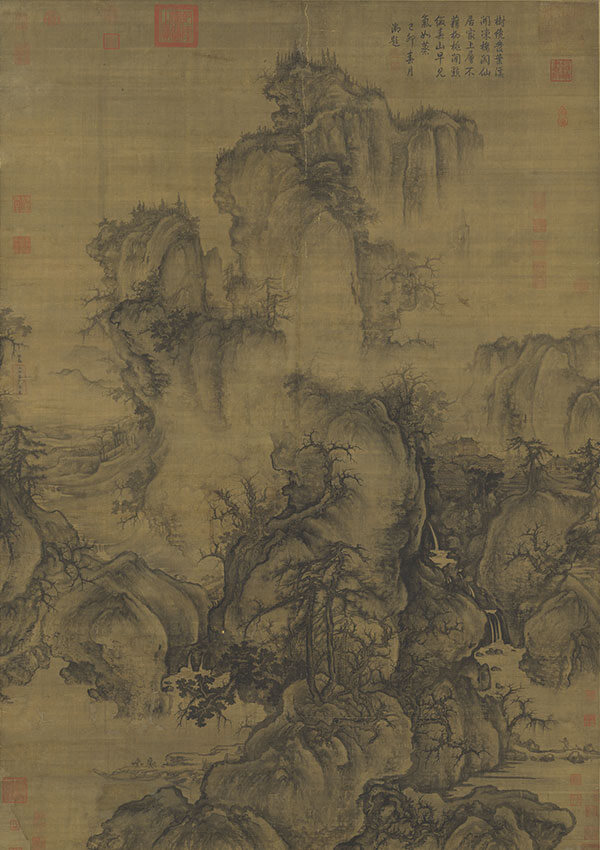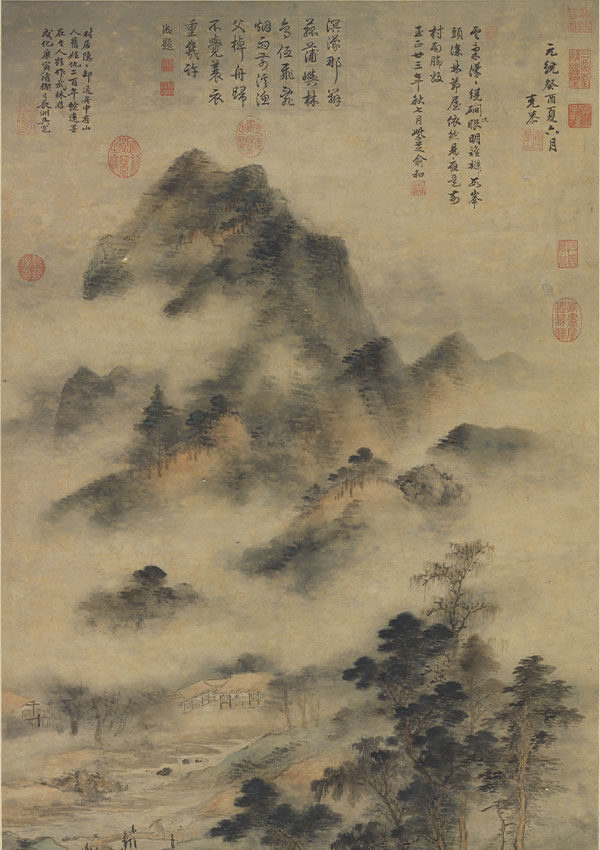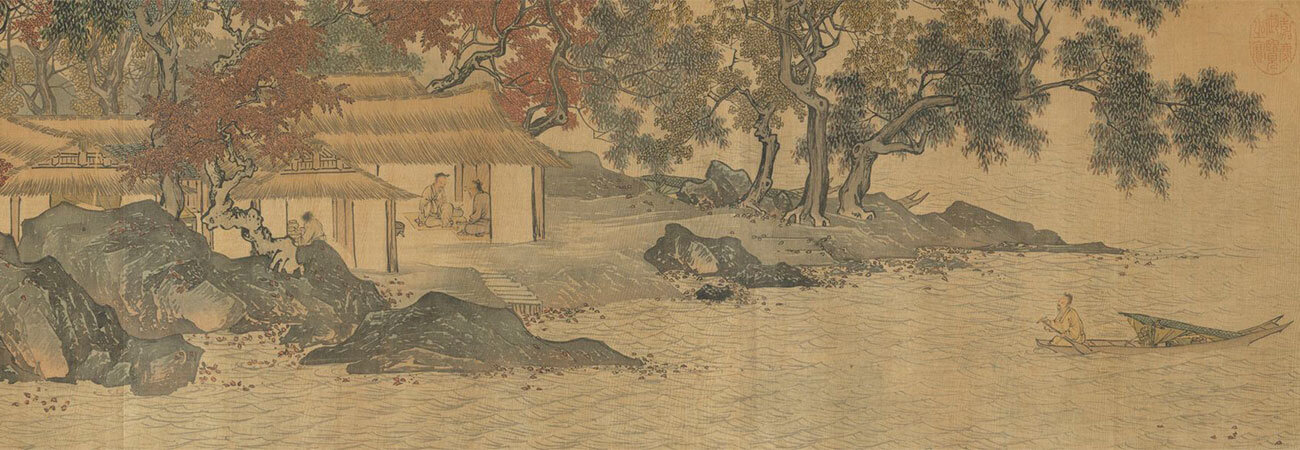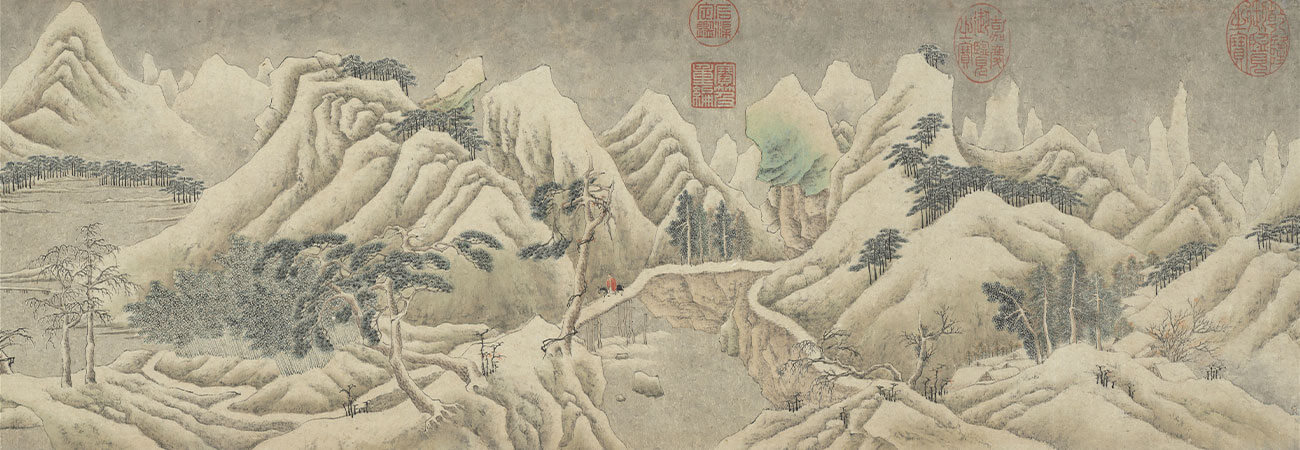Interactive Section
This section respectively explores the painter's missionary journey across the ocean and observes the seasonal changes portrayed in landscapes paintings. It demonstrates the connection between the painter's creative motives and cultural relics. Cultural relics from the collection used in the immersive repertoire "Trail of Master Painter" and "Journey through the Four Seasons" will be extracted to provide the audience with an intuitive experience through digital interactive devices to discover the stories hidden within brush and ink.
Ring-O Spinning Interactive Gadget
This installation will display "Fishing in Reclusion Among Mountains and Streams" and "Deep Snow in Mountain Passes" from the "Journey through the Four Seasons" theme.
While manipulating and rotating the Ring-O gadget, the screen will simultaneously magnify the finer details of the artworks, providing the audience to appreciate the knowledge explanations and animated analyses of the seasonal landscape paintings from the National Palace Museum collections.
- Song dynasty, Kuo Hsi, Early Spring
Kuo Hsi, a native of Wen-hsien in Honan province, served as a court painter under Emperor Shen-tsung (reigned 1068-1085). Early in his career as an artist, Kuo Hsi painted large screens and walls for major palaces and halls in the capital that had caught the attention of the emperor. Kuo was later promoted to the highest position of Painter-in-Attendance in the court Han-lin Academy of Painting. He produced many monumental landscape paintings and specialized in painting large pine trees and scenery enveloped in mist and clouds. He employed "curled cloud" texture strokes for mountain slopes, while he did trees in "crab claw" forms to create a style of his own. This work, done in 1072, is Kuo's most famous masterpiece. He entitled it "Early Spring," and, accordingly, auspicious clouds on an early spring day appear enveloping the landscape after just having emerged from winter--full of potential for life and renewal. Suggested by forms emerging from the mist, the land seems to awaken as the trees spring forth. Kuo Hsi arranged the main elements of the monumental landscape along the central axis of this vertical scroll. Large landforms and pine trees in the foreground connect with the "S"-shape of the middleground. Following a break with the mist, the slope climbs up and continues into the winding central mountain in the back. Deep distance penetrates to either side of the mighty mountain as winding forms are complemented by the diagonal breaks of streams and waterfalls. Lofty halls and pavilions along with a thatched-roof kiosk are tucked deep in the mountains to the right. The flat distance to the left creates an expansive horizontal vista that complements the dizzying heights of the mountains. The ink is light yet rich, while the composition combines the techniques of tall, deep, and flat distances, making this an ideal landscape for walking, viewing, living, and traveling in the imagination.
- Yuan dynasty, Kao K'o-kung, Trees and Hills in Mists and Rain
Kao Ko-kung's ancestors were Uighurs from Central Asia who moved to Ta-tung, Shansi. Kao K'o-kung later lived in Wu-lin. His style name was Yen-ching and his sobriquet was Fang-shan lao-jen. His official career culminated in the position of minister in the Ministry of Justice. He painted landscapes, following the father and son, Mi Fu (1051-1107) and Mi Yu-jen (1075-1151) of the Sung dynasty. His achievements were far beyond the reach of ordinary artists. Although Kao's painting was renowned, his surviving works are rare. This work, formerly attributed to Kao K'o-kung, depicts the intimate scenery of a mountain stream. Heavy mists swirl around. A boatman wearing a hemp rain coat is about to moor his vessel on the shore. Further along the stream is a group of three thatched houses. One can catch glimpses of the distant mountains between the bands of mist. The brushwork is refined and introspective, concealing profound ideas. The style of the painting is close to that of the Ming dynasty.
This handscroll painting depicts pine trees, red maples, and yellow leaves against a waterfall and flowing stream with thatched cottage and water kiosk buildings scattered among rocky banks. Figures kneel to each other for a drink, leisurely hold a staff on a walk, lean on a railing to observe fishing, or play a flute with feet in the water for a carefree existence. The mountains combine "hemp-fiber" and elongated "axe-cut with water" texture strokes, the rocks rendered with washes of mineral blue and ink. The places in sunlight are left blank to suggest the light and dark of uneven surfaces for a volumetric effect. The leaves are painted in the outline method with washes of cyanine blue, cinnabar red, and gamboges yellow added for a beautiful and colorful manner. The brush and ink throughout is also exceptional, the scenery even more marvelous. Tang Yin's inscription on the painting includes the line, "In times of peace heroes drop their guard," expressing aspirations that filled his heart but also indicating that people of talent had no chance to demonstrate their abilities. Such students of Wen Zhengming as Lu Zhi, Cheng Dalun, Gu Deyu, and Ju Jie all wrote inscriptions at the end of the scroll, and the inscription by Wang Chong was composed in the spring of the second year of the Jiajing reign (1523).
Wen Zhengming, native to Changzhou, Jiangsu, had the given name Bi but was known by his style name Zhengming; his sobriquets included Tingyunsheng and Hengshan jushi. Excelling at poetry, calligraphy, and painting, Wen followed the style of his teacher, Shen Zhou, to become one of the Four Ming Masters. Amidst clustered peaks and fluttering snow in a scene devoid of greenery appear travelers astride donkeys as they cross a frozen river. This snowscape was rendered using colors, the contours described in blue, green, and ink washes. With its marvelous brushwork on beautiful paper, this work is truly a masterpiece of Wen Zheng-ming.

